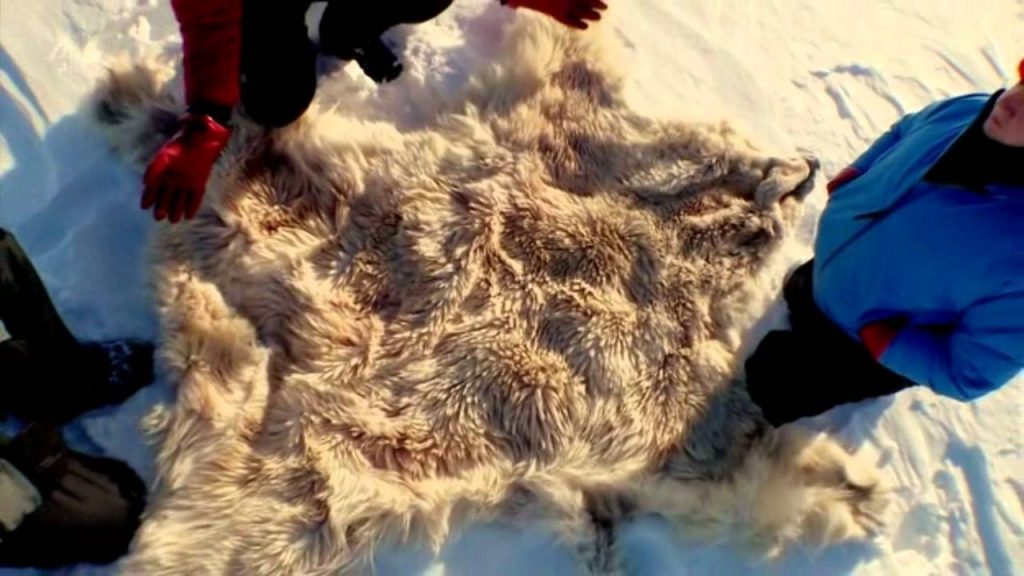The team join Inuit hunters and scientists studying polar bears off the coast of Greenland. Polar bears have become a symbol of climate change as their habitat is threatened. And, at the top of the food chain, they are especially vulnerable to physiological side effects from man-made pollutants. Scientists have been monitoring the levels of toxic chemicals found in polar bears for over a decade. There are early signs of changes to their reproductive organs and neurological damage. The scientists collect blood and fresh tissue samples and collaborate with local people, who are permitted to hunt a small quota of bears. The hunting is strictly controlled, using traditional methods and avoiding mothers with cubs. The Inside Nature’s Giants experts join the expedition to carry out an anatomical dissection to explore some of the mysteries of the polar bear. Scenes of animal dissection are included. Comparative anatomist Professor Joy Reidenberg is astonished by the thickness of the polar bear’s fur and even more surprised to discover that while its skin is black and its fur translucent, the polar bear still appears white. The programme asks how they cope with such a high-fat diet of seal blubber without risking heart failure. And, out on the ice, Simon Watt crawls inside a recently evacuated polar bear den and traces their remarkable evolutionary story. As their habitat melts and their food becomes increasingly contaminated, the polar bears’ future looks precarious. Can they adapt fast enough to survive this rapidly changing world?
Inside Nature’s Giants: Polar Bear

